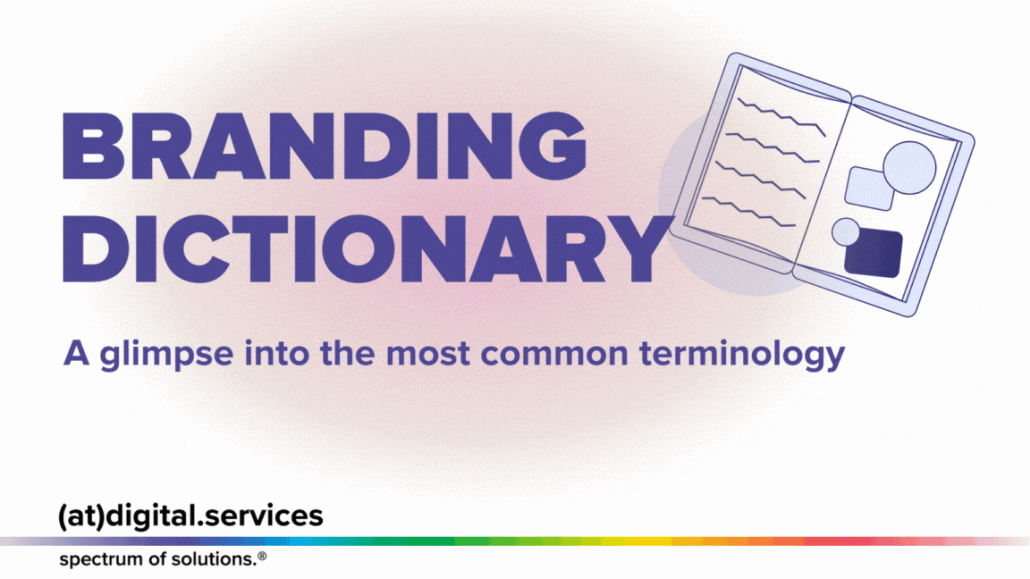In today’s competitive market, building a strong brand is essential for businesses to differentiate themselves and connect with their target audience. The concepts of brand and branding encompass various elements that contribute to a brand’s success. This article explores the fundamentals of branding and key terms, from A to Z, associated with it:
Brand and Branding Basics
Brand: A Unique Identifier
A brand represents a combination of tangible and intangible attributes that serve as a unique identifier for a company, organization, or product. Logos, marks, colors, names, and phrases are among the features that contribute to a brand’s distinct identity.
Brand Ambassador: The Face of a Brand
The role of a brand ambassador is crucial in embodying the essence and values of a brand. While the CEO often takes on this role, brand ambassadors can also be social media influencers, sales managers, or customer representatives, amplifying the brand’s message to a wider audience.
Brand Awareness: Connecting with the Targeted Audience
Brand awareness refers to the ability of a targeted audience to become familiar with and recognize a brand within the market. Establishing brand awareness is essential for capturing consumers’ attention and generating interest in the brand.
Brand Experience: Shaping Stakeholders’ Perception
The brand experience encompasses the overall impression and perception that stakeholders and consumers develop through their interactions with a brand. It includes both controlled experiences, such as information shared on the company website, ads, and product descriptions, as well as uncontrolled experiences arising from media coverage and communication among the brand’s users.
Brand Extension: Expanding into New Markets
Brand extension occurs when a company or brand seeks to expand its reach by launching a new product into a new market or sector. This strategy leverages the existing brand recognition to facilitate entry into new domains.
Brand Identity: Standing Out in the Market
Brand identity is the outward expression and perception of a brand, setting it apart in the market. It encompasses unique characteristics such as the brand name, logo, tagline, tone, and typography. These elements appeal to customers and help the brand establish a distinctive presence.
Brand Image: Influencing Consumer Perception
Brand image refers to the overall impression that consumers have of a particular brand. It is shaped by factors such as the brand’s logo, advertising, customer service, product quality, pricing, and overall reputation. A strong brand image leads to increased customer loyalty, greater market share,
and higher profitability.
Brand Loyalty: Fostering Customer Attachment
Brand loyalty describes the emotional attachment that consumers develop toward a particular brand or product, motivating them to consistently choose that brand. Factors such as quality, reliability, trust, emotional connection, and brand identity contribute to building brand loyalty.
Brand Message: Core Communication to the Target Audience
The brand message represents the core idea that a company communicates about its products or services to its target audience. It encompasses the competitive advantages, values, and principles that the company represents. Effective brand messaging helps position the brand in the market and resonate with customers.
Brand Strategy: Long-Term Plan for Business Success
Brand strategy is the development of a long-term plan to promote a business and establish its identity. It includes defining the company’s purpose, developing products, identifying target audiences, and creating a series of marketing tactics. The aim is to differentiate the brand from competitors and achieve business success.
Co-Branding: Leveraging Synergies for Mutual Benefit
Co-branding is a marketing strategy where two or more brands collaborate to leverage each other’s strengths. This approach creates a stronger value proposition, increases brand awareness, drives sales, and targets new customers by combining resources and expertise.
Key Elements of Branding
Culture: Shaping the Company’s Personality
Culture within a company is akin to personality in individuals. It refers to the unique set of values, beliefs, and behaviors that define an organization. Understanding and nurturing the company’s culture is vital for stakeholders and employees, as it influences how the company is perceived externally and affects employee engagement and satisfaction.
Customer Service: Building Strong Relationships
Customer service entails providing assistance and support to customers before, during, and after a purchase. It significantly impacts how the company is perceived, as exceptional customer service ensures a positive experience, fosters customer loyalty, and strengthens the relationship between the brand and its customers.
Logo: Visual Representation of the Brand
A logo serves as a graphic or symbol that represents a brand. It is a crucial element of a company’s visual identity, enabling customers to easily identify and connect with the brand. A well-designed logo becomes a memorable and recognizable symbol of the brand.
Rebranding: Transforming the Brand’s Visual Identity
Rebranding involves updating or completely changing a company’s visual identity. This process is often undertaken when a brand wants to alter its image, expand into new markets, merge with another company, or improve its perception in the market following a reputational crisis.
Reputation: Shaping Perceptions and Credibility
Reputation refers to the perception or opinion that people have of a company, product, or service. It directly impacts the credibility and performance of the brand among customers and potential customers. Reputation can be influenced by factors such as media coverage, word-of-mouth, and social media.
Visual Identity: Creating a Recognizable Image
Visual identity encompasses the visual elements that characterize a company and create a recognizable image. It includes the company’s logo, colors, typography, and other design elements. A strong visual identity helps establish a consistent and distinct image that represents the organization’s values and goals.
Conclusion
While this article provides a glimpse into the world of branding, there are numerous other terms and concepts that contribute to this field. Understanding and leveraging these elements can empower businesses to craft effective brand strategies and achieve their organizational goals.



